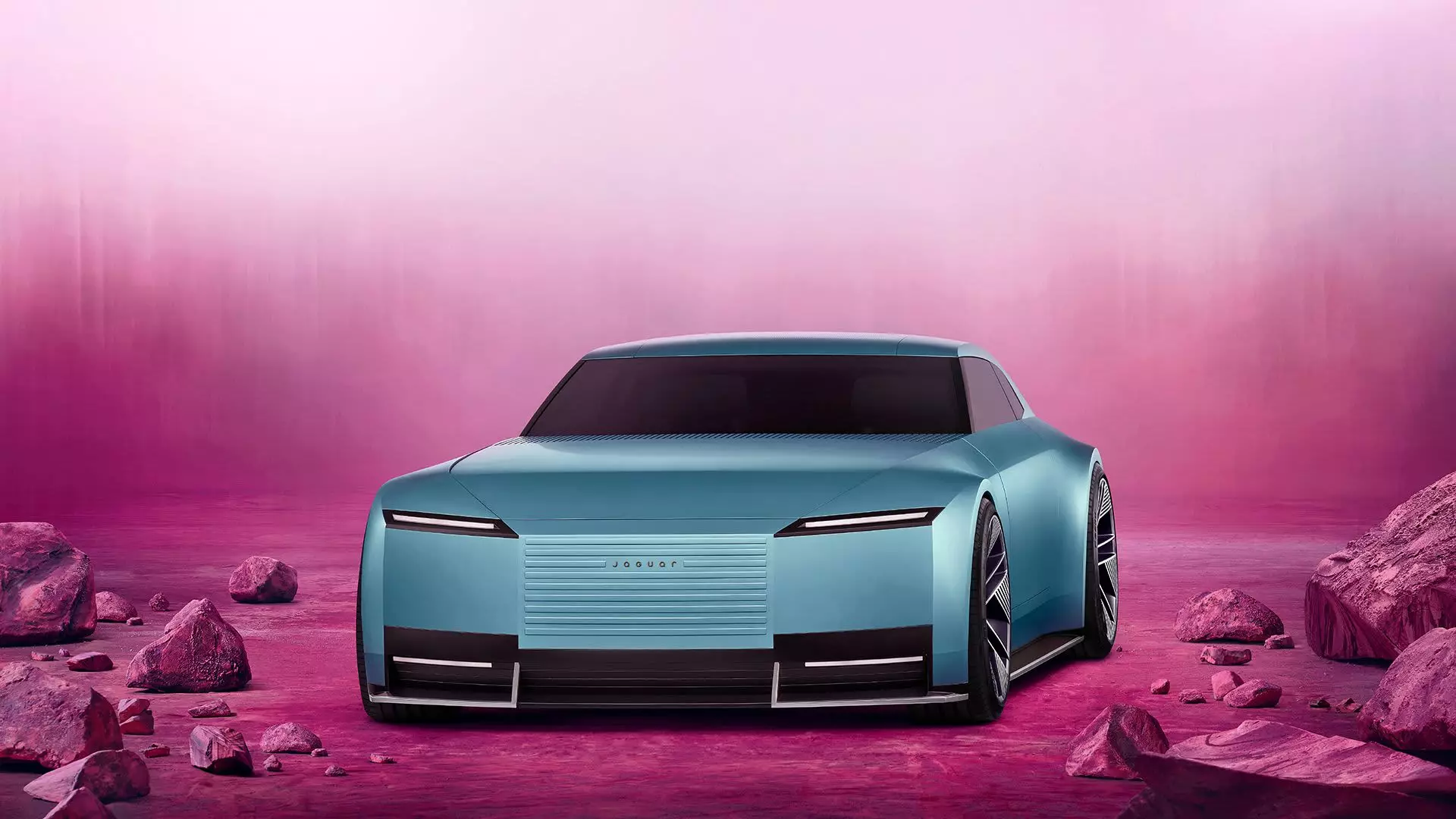On a recent evening, Jaguar, the venerable British automotive brand known for its elegant performance vehicles, unveiled an ambitious and forward-thinking design philosophy with the introduction of its all-electric concept car, the “Type 00.” This unveiling marks a significant pivot in Jaguar’s automotive journey, steering the company toward the realm of sustainable mobility. The Type 00 aims to ignite discussions on future designs while revealing the company’s commitment to electric vehicles (EVs).
The design of the Type 00 is notably polarizing. Emphasizing minimalism, its boxy silhouette contrasts sharply with the sleek, sporty aesthetics that have long defined Jaguar’s lineup. The incorporation of large wheels and sharp, sleek headlights gives it a modern flair, but some critics argue the design borders on gaudy. This duality in design—mixing minimalistic lines with bold visual elements—suggests a deeper philosophical shift in Jaguar’s identity, interlacing tradition with modernity in a way that may resonate with new buyers eager for unique electric vehicles.
Concept cars like the Type 00 traditionally serve as platforms where manufacturers can test consumer interest and gather feedback on design and functionality before committing to production. Jaguar appears to be tapping into this approach to gauge public reaction to its radical shift toward an all-electric future. As the auto industry pivots to electrification, it’s vital for companies to demonstrate flexibility and zealous innovation, ensuring they remain relevant in today’s rapidly changing market.
Looking toward the future, Jaguar has indicated plans to introduce multiple new electric vehicles in the coming years. An ambitious four-door GT car is rumored to be in development, which could closely mirror the Type 00’s design elements when unveiled next year. With a projected range of up to 430 miles on a single charge, Jaguar aims to position itself competitively within the EV market, which is steadily gaining traction among consumers who demand both style and sustainability.
Furthermore, rapid charging capabilities will allow drivers to travel up to 200 miles in just 15 minutes, effectively mitigating one of the primary concerns associated with electric vehicles: range anxiety. This promise of convenience aligns with Jaguar’s goal of appealing to those wary of moving away from traditional combustion engines.
Highlighting its commitment to reinvention, Jaguar recently launched a rebranding campaign encapsulated in the provocative “Copy Nothing” slogan. This campaign included a visually striking advertisement featuring androgynous models of diverse backgrounds, clad in vibrant attire, against a kaleidoscopic backdrop. Yet, the choice to obscure the vehicles themselves in favor of a strong visual statement prompted mixed reactions. Critics lambasted the departure from Jaguar’s storied legacy, particularly highlighting the removal of the iconic Jaguar logo that has adorned the brand since the 1950s.
While the campaign attracted significant attention, it also spurred criticism on social media, with detractors charging the campaign as emblematic of a “woke” ethos that eschews heritage. Despite backlash, Jaguar remains resolute in its strategy, framing the rebranding as a necessary step to ensure relevance and appeal at a different market segment.
As Jaguar prepares to embark on a transformative journey towards an all-electric fleet by 2026, the challenges are palpable. The automotive industry is in a state of flux, with numerous brands announcing their intentions to pivot to electric-only offerings. Jaguar’s rebranding, electrification efforts, and the unveiling of the Type 00 may signify both a courageous leap into the future and a call to the brand’s legacy. The industry will undoubtedly be watching closely as this iconic marque attempts to navigate its new identity amidst changing consumer expectations and a rapidly evolving marketplace.

